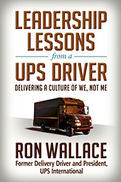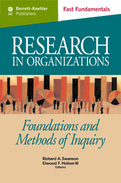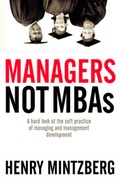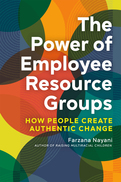Search Results: "employee development"
Results 43-48 of 768
United Parcel Service (UPS) is a household name that customers and investors alike hold in high regard. Who hasn't been delighted by a right-on-time delivery, one of the 18 million UPS makes every day? Founded over a hundred years ago, UPS has moved steadily up the Fortune 500 while so many other corporations have disappeared. What's the company's secret?
Just ask a driver!
Ron Wallace was a UPS delivery driver for six years before he began rising through the ranks, ultimately becoming president of UPS International. In other companies, that might be extraordinary, but at UPS it's par for the course. UPS has a unique corporate culture. It's like a family. Package loaders call executives by their first names and vice versa. The company almost always promotes from within. Lifetime employment is common. Most employees own UPS stock. Wallace credits the company's success—and his own—to its culture of “we, not me.” As he puts it, working at UPS gave him a PhD in teamwork.
Instead of writing a typical business memoir that celebrates the leader as celebrity, Wallace shares vivid stories that focus on the people he worked with, the challenges they overcame, and the simple principles and practices that make up the UPS way. He exhorts his readers to grow their people, not just their business plans. The leadership style described in this book is simple and direct—and it works. The straightforward and easy-to-understand lessons provide a blueprint for an individual or company to build on past successes and adapt to future challenges. This is a must-read for anyone aspiring to become a great leader.
Just ask a driver!
Ron Wallace was a UPS delivery driver for six years before he began rising through the ranks, ultimately becoming president of UPS International. In other companies, that might be extraordinary, but at UPS it's par for the course. UPS has a unique corporate culture. It's like a family. Package loaders call executives by their first names and vice versa. The company almost always promotes from within. Lifetime employment is common. Most employees own UPS stock. Wallace credits the company's success—and his own—to its culture of “we, not me.” As he puts it, working at UPS gave him a PhD in teamwork.
Instead of writing a typical business memoir that celebrates the leader as celebrity, Wallace shares vivid stories that focus on the people he worked with, the challenges they overcame, and the simple principles and practices that make up the UPS way. He exhorts his readers to grow their people, not just their business plans. The leadership style described in this book is simple and direct—and it works. The straightforward and easy-to-understand lessons provide a blueprint for an individual or company to build on past successes and adapt to future challenges. This is a must-read for anyone aspiring to become a great leader.
Formula 2 + 2
2004
In today’s fast-paced business environment, frequent feedback and “course correction” is absolutely vital. But about the only time most managers offer employees feedback is during scheduled (and generally infrequent) performance appraisals, which tend to be stiff, formal, and—whether intentionally or not—adversarial, and therefore ineffective. Formula 2+2 offers a simple yet powerful approach to revolutionizing feedback conversations. It details the five secrets of effective feedback:
• Timeliness
• Balance
• Focus
• Specificity
• Follow-up
Formula 2+2 shows how to foster a culture of continuous feedback which increases the effectiveness of the manager, protects the spirit and dignity of employees, and provides a systematic approach to reinforcing and improving employee performance.The latest volume in Berrett-Koehler's Ken Blanchard Series
Includes a foreword by Ken Blanchard, an introduction by Bill Cosby, and a mid-book message from lunar astronaut Buzz Aldrin
Offers managers a simple system that will increase their effectiveness and improve employee morale and productivity
Written in the accessible and compelling Blanchard storytelling style
In today's fast-paced and rapidly changing business environment, frequent feedback and "course correction" is absolutely vital. But about the only time most managers offer employees feedback is during scheduled (and generally infrequent) performance appraisals, which tend to be stiff, formal, and-whether intentionally or not-adversarial, and therefore ineffective.
Formula 2+2 offers a simple yet powerful approach to revolutionizing feedback conversations. It details the five secrets of effective feedback: making it timely, balanced between compliments and critiques, focused on high priority areas, supported with specific examples, and reinforced with appropriate follow-up.
The book tracks the transformation of Pauline, a strong but traditional leader whose attempts at coaching and feedback are failing miserably. An old friend introduces her to Formula 2+2 and walks her through the five secrets of effectively implementing 2+2 feedback. Pauline discovers that providing feedback is not a necessary evil, but can become a welcome part of the manager's job.
Formula 2+2 shows how to foster a culture of continuous feedback which increases the effectiveness of the manager, protects the spirit and dignity of employees, and provides a systematic approach to reinforcing and improving employee performance.
- The latest volume in Berrett-Koehler's Ken Blanchard Series
- Includes a foreword by Ken Blanchard, an introduction by Bill Cosby, and a mid-book message from lunar astronaut Buzz Aldrin
- Offers managers a simple system that will increase their effectiveness and improve employee morale and productivity
- Written in the accessible and compelling Blanchard storytelling style
Managers Not MBAs
2005
In this sweeping critique of how managers are educated and how, as a consequence, management is practiced, Henry Mintzberg offers thoughtful and controversial ideas for reforming both.
“The MBA trains the wrong people in the wrong ways with the wrong consequences,” Mintzberg writes. “Using the classroom to help develop people already practicing management is a fine idea, but pretending to create managers out of people who have never managed is a sham.”
Leaders cannot be created in a classroom. They arise in context. But people who already practice management can significantly improve their effectiveness given the opportunity to learn thoughtfully from their own experience. Mintzberg calls for a more engaging approach to managing and a more reflective approach to management education. He also outlines how business schools can become true schools of management.
“The MBA trains the wrong people in the wrong ways with the wrong consequences,” Mintzberg writes. “Using the classroom to help develop people already practicing management is a fine idea, but pretending to create managers out of people who have never managed is a sham.”
Leaders cannot be created in a classroom. They arise in context. But people who already practice management can significantly improve their effectiveness given the opportunity to learn thoughtfully from their own experience. Mintzberg calls for a more engaging approach to managing and a more reflective approach to management education. He also outlines how business schools can become true schools of management.
- Mintzberg, author of such classic bestsellers as The Rise and Fall of Strategic Planning and The Nature of Managerial Work, was named one of the Top 10 Management Thinkers in the World by the Financial Times
- The most extensive critique of management education and its effects on management practice ever published-showing how MBA programs train the wrong people in the wrong ways with the wrong consequences
- Offers proven alternatives for educating the right people in the right ways with the right consequences
This is the first authoritative book on building employee resource groups (ERGs) to empower underrepresented employees and positively impact DEI efforts within organizations and in society at large.
Employee resource groups (ERGs) have been present for decades. Originating out of affirmative action policies, they have evolved into powerful sources of employee activity and engagement that organizations have leveraged to support business goals. But ERGs can help create a more inclusive and just world at the same time that they serve company interests.
The focus for this book is on both how to manage ERGs effectively and why organizations should pay close attention to these groups as a source for engagement, innovation, belonging, feedback, and direction on tough issues. Farzana Nayani provides foundational tools and frameworks for starting and supporting an ERG. She also offers guidance for how ERGs can create impact in diversity, equity and inclusion efforts and can motivate action toward a more equitable society overall.
This is not just a handbook or a reference guide. It also serves as a deeper call to action around how, with more effective ERGs, we can truly progress toward the DEI goals that we are all setting out to accomplish.
Employee resource groups (ERGs) have been present for decades. Originating out of affirmative action policies, they have evolved into powerful sources of employee activity and engagement that organizations have leveraged to support business goals. But ERGs can help create a more inclusive and just world at the same time that they serve company interests.
The focus for this book is on both how to manage ERGs effectively and why organizations should pay close attention to these groups as a source for engagement, innovation, belonging, feedback, and direction on tough issues. Farzana Nayani provides foundational tools and frameworks for starting and supporting an ERG. She also offers guidance for how ERGs can create impact in diversity, equity and inclusion efforts and can motivate action toward a more equitable society overall.
This is not just a handbook or a reference guide. It also serves as a deeper call to action around how, with more effective ERGs, we can truly progress toward the DEI goals that we are all setting out to accomplish.
Provides practical solutions to the business problem of distributing training to multiple locations
Introduces a new and practical way to use assessment to create a sustainable training and development function
Shows how those involved with training and development can make bottom line contributions to the company
Provides a model for calculating return on investment (ROI) for technology based programs
In this era of rapid globalization, human resource development professionals in every type of organization face the problem of managing training and development across many different, often widely dispersed, sites. Training Across Multiple Locations offers a comprehensive, proven model for designing, building and assessing every aspect of a multiple location training and development (T&D) system. Stephen Krempl and R. Wayne Pace detail how to integrate training from multiple locations into a comprehensive organizational strategy, and how corporate training can align those multiple locations with a single corporate vision.
Training Across Multiple Locations draws from numerous real-life examples to show how distance learning technology-including intra-nets, web-based training, and computer-based training-is being used to manage multi-point training at companies like Motorola, Ford, Boeing, Kinko's, Hewlett-Packard, and others. With technology, the authors reveal, training organizations are able to extend their reach and distribute training over a far wider audience in ways that may make current approaches to training less relevant and even obsolete. And perhaps most importantly, they provide a model for calculating return on investment (ROI) for these technology-based programs.
Krempl and Pace present a detailed review process for evaluating the effectiveness of multiple location training and development systems and provide specific advice on how to conduct the review and how to share data to enhance unit effectiveness. They also include a unique questionnaire that helps teams assess how well they are carrying out their T&D responsibilities and how well they are integrating their activities into the corporate business plan.
Training and development functions survive by maintaining relationships with critical decision-makers at all levels in the organization. This process is often described in terms of politics and power-but Training Across Multiple Locations treats the issue simply in terms of how to get the job done. The unique process described in this book will encourage better preparation and more informed discussions and decisions, allowing managers to better anticipate problems and stay on top of key issues.Provides practical solutions to the business problem of distributing training to multiple locations
Introduces a new and practical way to use assessment to create a sustainable training and development function
Shows how those involved with training and development can make bottom line contributions to the company
Provides a model for calculating return on investment (ROI) for technology based programs
In this era of rapid globalization, human resource development professionals in every type of organization face the problem of managing training and development across many different, often widely dispersed, sites. Training Across Multiple Locations offers a comprehensive, proven model for designing, building and assessing every aspect of a multiple location training and development (T&D) system. Stephen Krempl and R. Wayne Pace detail how to integrate training from multiple locations into a comprehensive organizational strategy, and how corporate training can align those multiple locations with a single corporate vision.
Training Across Multiple Locations draws from numerous real-life examples to show how distance learning technology-including intra-nets, web-based training, and computer-based training-is being used to manage multi-point training at companies like Motorola, Ford, Boeing, Kinko's, Hewlett-Packard, and others. With technology, the authors reveal, training organizations are able to extend their reach and distribute training over a far wider audience in ways that may make current approaches to training less relevant and even obsolete. And perhaps most importantly, they provide a model for calculating return on investment (ROI) for these technology-based programs.
Krempl and Pace present a detailed review process for evaluating the effectiveness of multiple location training and development systems and provide specific advice on how to conduct the review and how to share data to enhance unit effectiveness. They also include a unique questionnaire that helps teams assess how well they are carrying out their T&D responsibilities and how well they are integrating their activities into the corporate business plan.
Training and development functions survive by maintaining relationships with critical decision-makers at all levels in the organization. This process is often described in terms of politics and power-but Training Across Multiple Locations treats the issue simply in terms of how to get the job done. The unique process described in this book will encourage better preparation and more informed discussions and decisions, allowing managers to better anticipate problems and stay on top of key issues.
- Provides practical solutions to the business problem of distributing training to multiple locations
- Introduces a new and practical way to use assessment to create a sustainable training and development function
- Shows how those involved with training and development can make bottom line contributions to the company
- Provides a model for calculating return on investment (ROI) for technology based programs
























